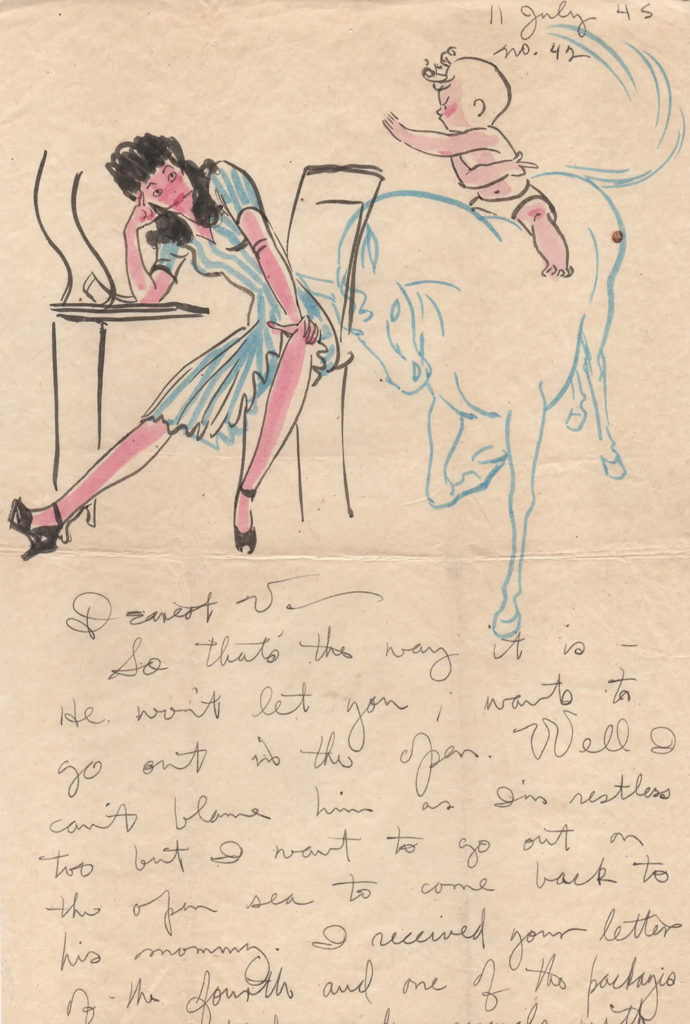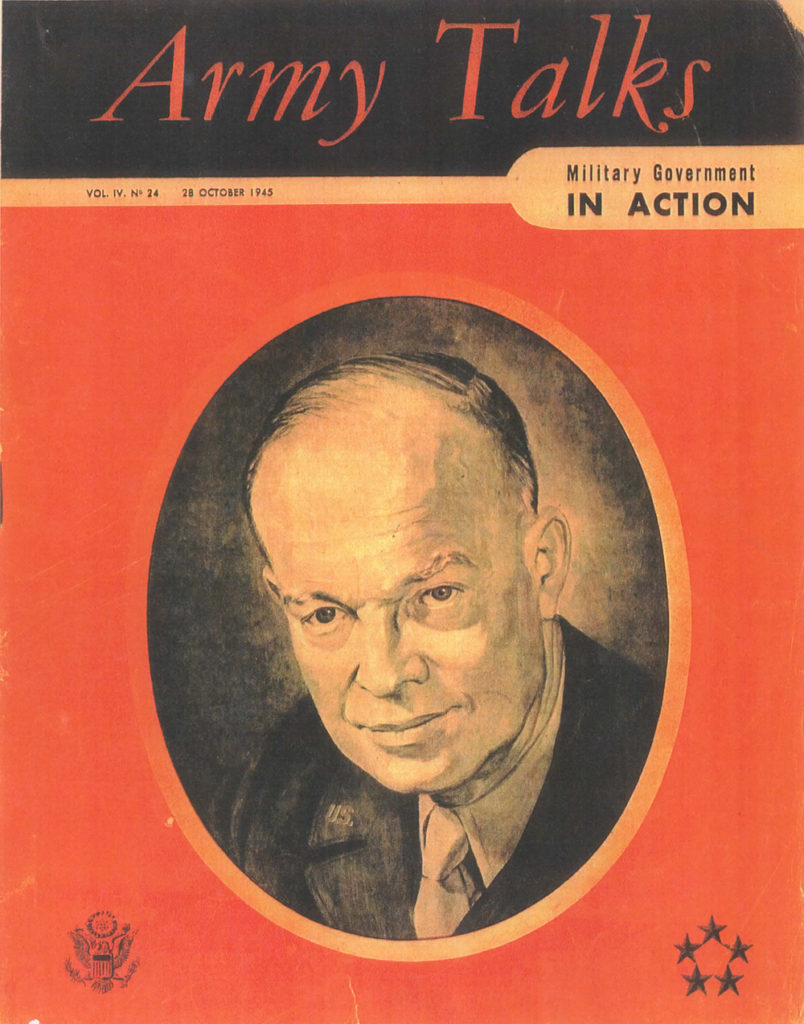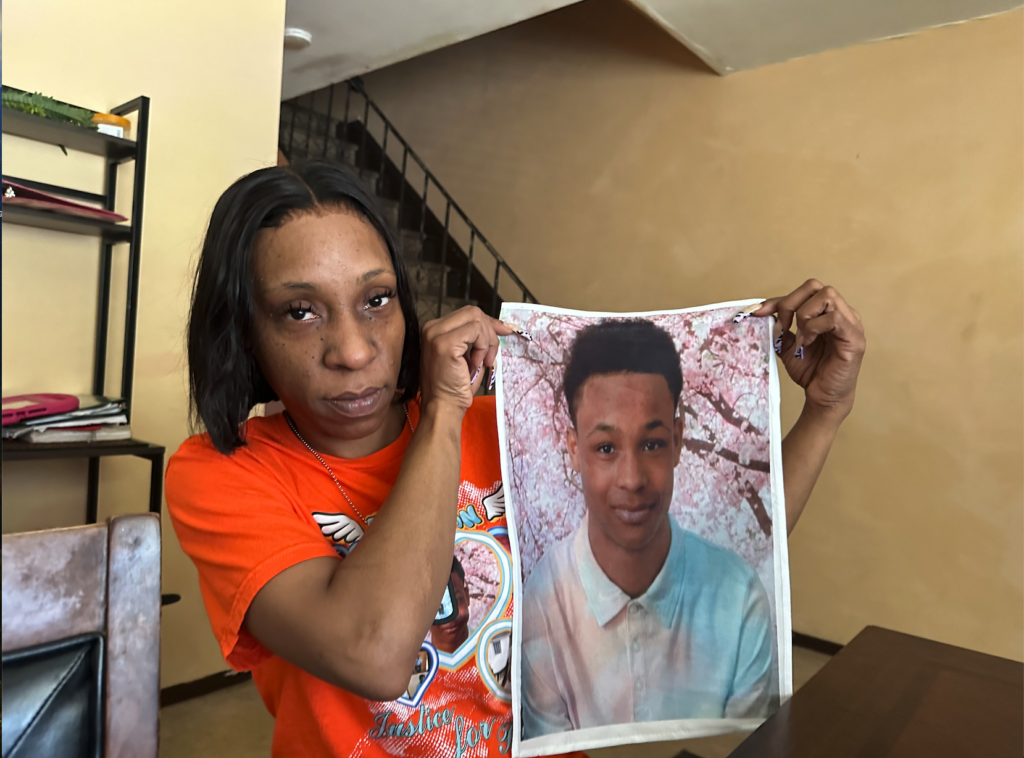Column: Social distancing back during an era of war

The letters from a distant land began with the same salutation: “Dearest V —.”
Wherever George Withers traveled across Europe during World War II as a soldier in the U.S. Army, he always found time to write home to his wife, Virginia, and their young son, Brian, in New York. As a talented artist who made a career illustrating magazines, newspapers and advertisements, George played a unique role in the Army as a war artist. He would illustrate military publications and pamphlets. He’d be assigned to illustrate a battle scene, for example, to provide a glimpse of what was happening for soldiers in another part of Europe or the Pacific. He captured images of exhausted GIs, the homeless and Holocaust victims. A portrait of General of the Army Dwight Eisenhower was featured on the cover of the October 1945 Army Talks Magazine.
He was 32 when he joined the Army and his role enabled him to send uncensored letters that he brought to life with illustrations connecting him to his family. While many letters soldiers wrote would be copied onto another piece of paper as they were reviewed to be sure they did not include sensitive details, George’s letters remained originals.
He used his talent to craft special images for his wife. Sometimes he would use a paintbrush and watercolor or pen and ink to illustrate. When he would receive a letter from Virgina describing what their young son had been doing, he would write back with an illustration that summed up her writing.
In a letter dated July 11, 1945, he drew an image from Paris of his son atop a horse, scolding his exhausted mother as she sat slumped in a chair, her head resting on her right hand. In an earlier letter, Virgina had written that Brian had disobeyed.
“So that’s the way it is,” he wrote to his wife in the 1945 letter. “He wants to go out in the open. Well I can’t blame him as I’m restless too but I want to go out on the open sea to come back to his mommy.”

Brian Withers, who’s now 76 and lives part-time in Mattituck, received many of the letters later in his life from his father, who died at age 47 in 1959 of a heart attack. When his mother died in 2006, he received the remaining letters and illustrations she held closest. His mother lived a full 47 years after her husband.
As the coronavirus pandemic has forced people to shelter in place and avoid the everyday interactions we’ve become so accustomed to, he thought of the parallels to America’s two world wars, when families were split apart and communication centered on waiting for letters.
“It occurred to me that social distancing and self-distancing was something that soldiers and their families had to do in World War II and no doubt World War I and other conflicts like this,” said Mr. Withers, who taught art at John Adams High School in New York City. “It imposes serious problems on all of us because we’re just not used to it.”
His grandmother, Virgina’s mother, had died during the 1918 flu pandemic and his grandfather died shortly afterward. Mr. Withers said he believes his grandfather died of a broken heart. Having lost both her parents young, his mother grew up in the care of aunts and uncles. She wound up working at an advertising agency, where she met her future husband.

Mr. Withers has recently spent time looking through many of the letters that traveled across the ocean from war to home. One watercolor he found was an image of a group of children who all looked remarkably like himself as a toddler, a “roly-poly kid.” The children were drawn scattered around a bed in which his mother lay. He said his mother had undergone surgery and his father sent the watercolor as a way to support her from afar.
At the top of the watercolor, George Withers had written: “Brian and I hope that you are well and that every thing came out all right.” And at the bottom he wrote, “We wish we could be there to see you.”
After her husband died, Virgina worked for a photographer in Huntington and then went back to college at Suffolk County Community College and Dowling to become a teacher to earn a better income to care for her son and daughter, Suzie. She went on to teach for about 20 years in the Brentwood School District.
These days, Mr. Withers and his wife, Dianne, would typically be spending time with their three grandchildren (and a fourth on the way). Instead, like so many others, they share memories on Facebook and chat with family members via Zoom.
Last Friday, as they hunkered down in Mattituck, Mr. Withers said he waved safely from a distance to neighbors walking their dogs as he did yard work. Two dogs across the street, Gus and Cooper, barked at him, hoping he would throw a tennis ball for them to retrieve.
“But, you know, social distancing didn’t allow us to engage,” he said.








